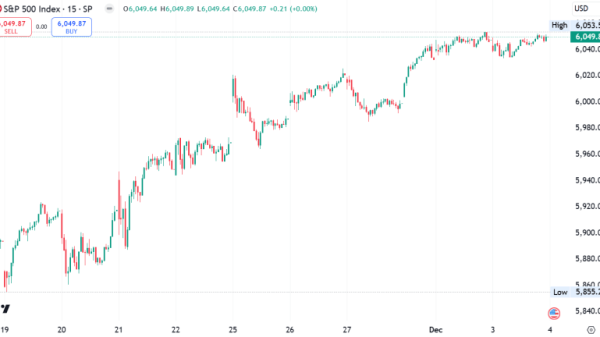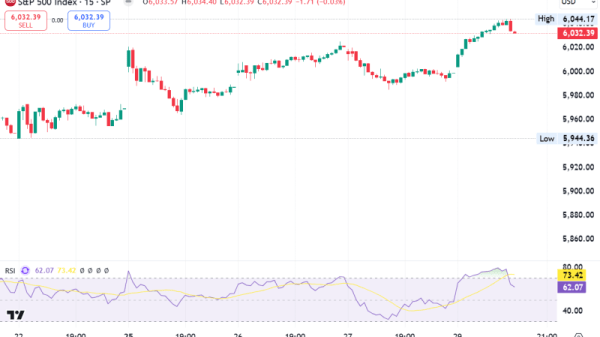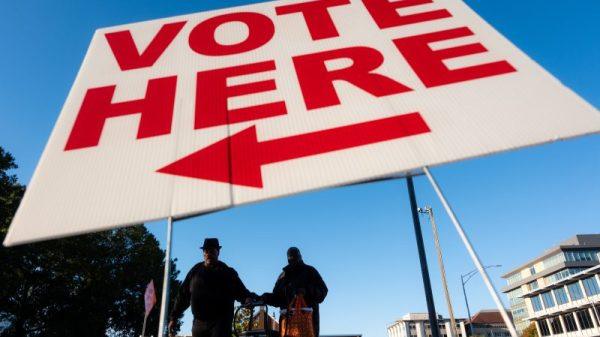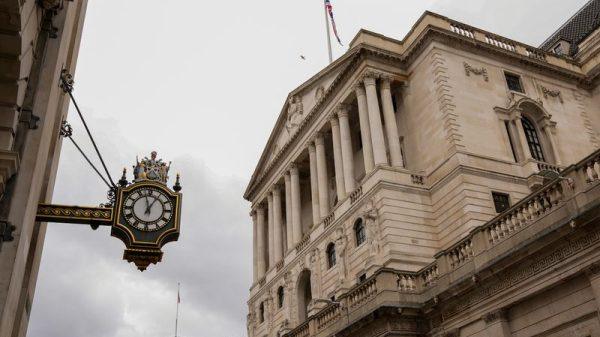By Saeed Azhar
(Reuters) – Rate cuts and easing bond yields are spurring some U.S. banks to cut losses on low-yielding investment securities, and park those funds in higher-yielding paper to improve returns and liquidity.
Such moves are likely to accelerate as more Federal Reserve interest-rate cuts materialize into 2025.
Declining rates also help reduce banks’ paper losses that soared two years ago and contributed to regional banking turmoil.
Banks invest in securities such as Treasuries and mortgage-backed securities for earnings growth and liquidity, but these investments are subject to interest-rate risks.
When the Fed began hiking interest rates in 2022, U.S. banks’ unrealized losses hit a peak of $690 billion, but fell to $513 billion in the second quarter, according to the Federal Deposit Insurance Corp.
As those losses declined and the Fed cut rates in September, big banks such as Wells Fargo and regional lenders such as KeyCorp (NYSE:KEY) sold low-rate securities to invest in paper at a higher rate.
The Federal Reserve slashed interest rates by a half percentage point to a new range of 4.75%-5.0%, and some policymakers have signalled support for more cuts.
“Banks have decided that the short-term hit from selling lost-value securities is worth the tradeoff for long-term gain of purchasing new higher-yielding securities,” said Wes West, chief analytics officer at Nomis Solutions, which provides loan and deposit-pricing software to banks.
Lenders were holding onto these low-yielding securities in the past because selling them at a steep loss, when rates were higher, would have forced them to set aside funds to meet regulatory capital ratios, analysts said.
They were marking down these investments in their available-for-sale securities. They are classified as such because the bank has the option to sell those bonds or securities before they mature.
Wells Fargo became the latest large lender to take this step in the third quarter when it sold about $16 billion in securities, taking a one-time hit of $447 million, and re-investing in paper that has a yield 130 basis points higher.
Wells did not comment beyond the disclosure.
The banks’ moves are opportunistic to lock in higher coupons now to improve reported profitability, given expectations of further rate cuts over the next couple of quarters, said Megan Fox, vice president at Moody’s (NYSE:MCO) Ratings.
Smaller lenders have done similar repositioning.
On Tuesday, Banc of California (NYSE:BANC), which bought PacWest last year, announced it had repositioned $742 million in securities at a weighted average yield of 2.94%, resulting in a pre-tax loss of $60 million. It purchased securities with a weighted average yield of 5.65%.
Regional lender KeyCorp sold about $7 billion of lower-yielding mortgage-backed securities and reinvested the proceeds into higher-yielding investments, it said in its third-quarter earnings statement. It took a $737-million after-tax charge related to the loss on the sale of securities.
KeyCorp said in an email the average yield on the securities sold was about 2.3%, while those bought had an average yield of 4.9%.
Some lenders have also taken advantage of one-time gains, such as those from asset sales, to soften the immediate hit from selling securities. Truist Financial (NYSE:TFC) Corp sold its insurance arm in May to reposition part of its available-for-sale investment securities portfolio.
PNC did a similar exercise in the second quarter when it also booked a gain from the exchange of shares in credit card company Visa (NYSE:V).
The banks did not comment beyond their disclosures.
Bank of America, which made a similar repositioning last year on its available-for-sale securities, has been re-investing cash from maturing securities in its held-to-maturity portfolio to higher-yielding paper. Bank of America did not comment beyond its disclosure.
Banks use the held-to-maturity designation to buy less-risky securities that give them downside protection, even though in a rising interest-rate environment there is limited upside.
Warren Kornfeld, senior vice president at Moody’s Ratings, said banks’ liquidity has improved because more securities are trading at par, while banks are also probably rolling investments into paper that has a shorter duration.
UNREALIZED LOSSES DECLINE
As rates fall, banks are seeing a decline in unrealized losses on their securities book.
Silicon Valley Bank failed in 2023 after it was unable to meet a swift and massive run by depositors who took out tens of billions of dollars within hours.
The sequence of events also included the sale of U.S. Treasuries to lock in funding costs, which resulted in a loss of $1.8 billion and a failed share sale.
“The banking system learned a lesson at how quickly things can go awry when you’re having spikes or very sharp acceleration in rates,” Jon Curran, head of investment-grade credit at Principal Asset Management.
“Now clearly, rates are declining or rates being stable is a much better outcome.”




































